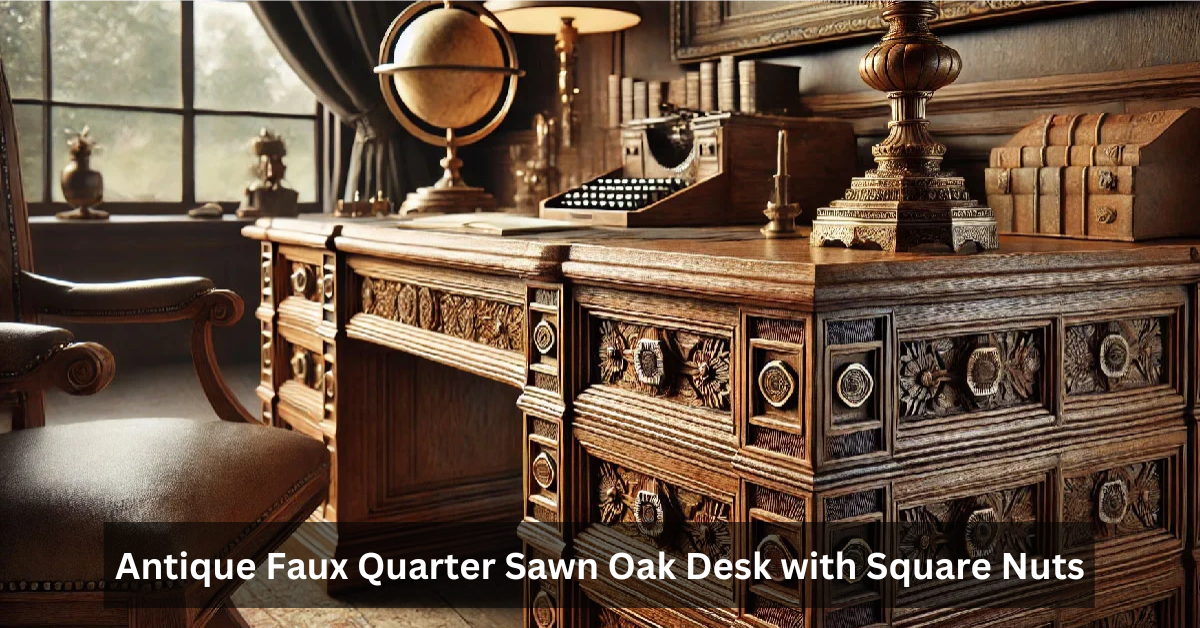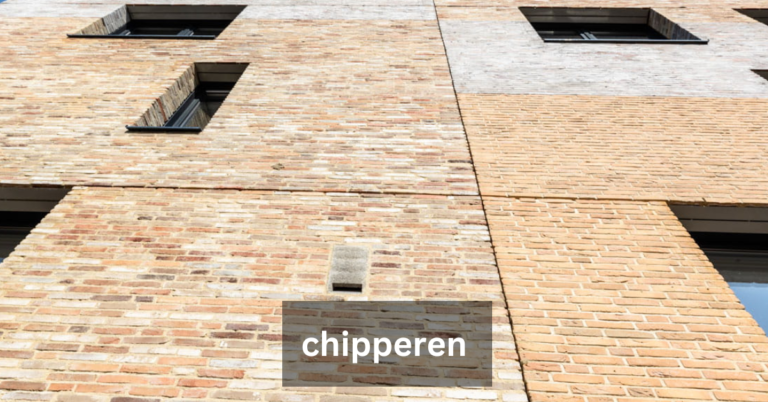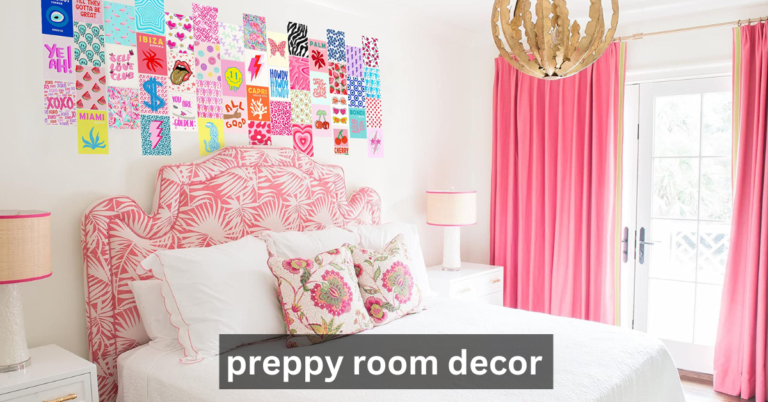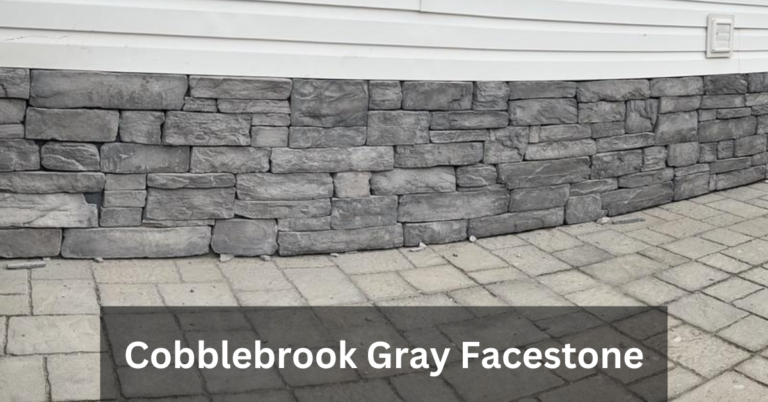Antique Faux Quarter Sawn Oak Desk with Square Nuts and More
Antique Faux Quarter Sawn Oak Desk with Square Nuts are more than just functional pieces of furniture; they embody history, craftsmanship, and timeless elegance. These desks, often crafted in the early 20th century, capture the essence of the Arts and Crafts movement, which emphasized quality, simplicity, and craftsmanship. The charm of a faux quarter sawn oak desk with square nuts is undeniable, as it seamlessly blends traditional woodwork with the industrial innovations of its time. Whether used as a statement piece in a modern office or as a collector’s item, these desks remain highly sought after by antique lovers and design enthusiasts alike.
Why These Desks Remain Highly Sought After Today
Faux quarter sawn oak desks stand out in today’s market due to their rich history, unique design, and solid construction. Unlike mass-produced office furniture, these antique desks are handcrafted, showcasing the skill of artisans who used traditional woodworking techniques. The aesthetic appeal of faux quarter sawn oak, with its striking wood grain patterns, combined with the sturdy square nuts used in the joinery, gives these desks a distinct character that modern furniture often lacks. Moreover, the high-quality oak wood used in these desks ensures that they stand the test of time, both in terms of durability and design.
Collectors and enthusiasts appreciate these desks for their connection to the Arts and Crafts movement and Mission style furniture, which was popular in the late 19th and early 20th centuries. As a result, Antique Faux Quarter Sawn Oak Desk with Square Nuts are seen not only as functional furniture but also as valuable collectibles that can increase in value over time.
A Brief Overview of Faux Quarter Sawn Oak and Square Nuts
Faux quarter sawn oak refers to a specific wood-cutting technique designed to replicate the appearance of genuine quarter sawn oak, which is highly prized for its unique wood grain. In faux quarter sawn oak furniture, the wood is sliced in such a way that it mimics the beautiful, tight grain patterns of the real thing, but without the expensive cost of true quarter sawn oak. The process involves cutting the oak at an angle, creating distinct ray-like patterns on the wood surface that are both visually striking and durable.
Square nuts, on the other hand, were commonly used in the early 20th century as part of the furniture’s hardware. These square-shaped metal nuts not only provided strong joinery but also added an industrial aesthetic that blended seamlessly with the handcrafted nature of the furniture. Square nuts are often found in Mission-style and Arts and Crafts furniture, making them a defining feature of antique desks from this period.
What is Faux Quarter Sawn Oak? Understanding the Technique
The Difference Between Real and Faux Quarter Sawn Oak
The primary difference between real and faux quarter sawn oak lies in the cutting technique. True quarter sawn oak is cut at a precise angle that reveals the wood’s distinctive grain pattern, which is highly valued in antique furniture. Faux quarter sawn oak, while visually similar, is a more cost-effective version that mimics the pattern without the complex and labor-intensive process of cutting the wood into quarter sections.
While faux quarter sawn oak is often indistinguishable from the real thing to the casual observer, it offers a more affordable alternative to collectors and homeowners seeking the aesthetic benefits of quarter sawn oak without the higher cost of true quarter sawn pieces.
How Faux Quarter Sawn Oak Became a Popular Choice in Antique Furniture
The popularity of faux quarter sawn oak surged during the late 19th and early 20th centuries, particularly within the Arts and Crafts movement. Furniture designers, such as Gustav Stickley and Charles and Henry Greene, embraced oak as a symbol of simplicity, functionality, and durability. The faux technique allowed furniture makers to achieve the appearance of quarter sawn oak without the expense, making these pieces accessible to a broader audience.
In this era, the growing interest in handcrafted furniture that emphasized practicality and beauty led to a rise in the demand for oak desks. Faux quarter sawn oak was a perfect material choice, combining the aesthetic appeal of oak with the functional needs of the modern office. Thus, the faux quarter sawn oak desk with square nuts became a hallmark of the period’s craftsmanship.
The Role of Square Nuts in Antique Desk Design
Functionality and Aesthetic Appeal of Square Nuts
Square nuts played a critical role in the design of antique desks, particularly in the early 20th century. These square-shaped metal nuts were not only practical but also visually appealing. The industrial aesthetic they brought to the desk’s design was a nod to the growing industrial revolution, where metal hardware began to supplement traditional wood joinery.
In addition to their strength, square nuts offered a distinct contrast to the rich wood tones of the desk, drawing attention to the intricate joinery. Whether used in the legs, drawers, or overall frame of the desk, square nuts added an element of rugged elegance that complemented the clean, straightforward lines of Mission-style and Arts and Crafts furniture.
Why Square Nuts Became a Staple in Early 20th-Century Furniture
The use of square nuts became prevalent during the early 20th century due to the influence of the Arts and Crafts movement and the industrial revolution. During this period, designers like Gustav Stickley sought to create furniture that was both functional and aesthetically pleasing, embracing the combination of wood and metal elements. Square nuts were ideal for this purpose, providing strength and durability while also offering a visually intriguing detail that matched the mission style’s rustic yet refined look.
Incorporating square nuts into furniture design was also a reflection of the era’s fascination with craftsmanship and materials. Metal hardware became a signature feature of period furniture, adding a touch of industrial sophistication to otherwise rustic wood pieces.
History and Evolution of Antique Faux Quarter Sawn Oak Desk with Square Nuts
The Rise of Oak Furniture in the Late 19th and Early 20th Centuries
The late 19th and early 20th centuries marked a significant shift in furniture design, with oak emerging as the wood of choice for high-quality furniture. This period, influenced by movements like Arts and Crafts and Mission style, saw a revival of handcrafted furniture that celebrated the beauty of natural materials and simple, functional design.
Oak’s durability and rich, warm tones made it a preferred material for desks and other office furniture. Faux quarter sawn oak, with its distinctive grain patterns, allowed furniture makers to replicate the look of more expensive quarter sawn oak while maintaining the affordability and accessibility of oak furniture.
How Industrialization Influenced Furniture Design
The industrial revolution had a profound impact on furniture design, influencing everything from the materials used to the techniques employed. As mass production techniques emerged, furniture designers sought to blend industrial efficiency with handcrafted artistry. The use of metal accents, such as square nuts, became a way to marry industrial elements with traditional woodworking, creating furniture that was both functional and aesthetically innovative.
This marriage of materials and techniques was particularly evident in the design of faux quarter sawn oak desks, where metal hardware worked in harmony with the natural wood grain to create pieces that were both practical and visually captivating.
Craftsmanship and Materials: What Makes These Desks Special?
Attention to Detail in Handcrafted Antique Desks
The craftsmanship behind Antique Faux Quarter Sawn Oak Desk with Square Nuts is truly exceptional. Each desk was meticulously handcrafted, with attention paid to every detail, from the joinery to the wood finishing. The use of dovetail joints, sturdy joinery, and intricate hardware ensured that these desks were not only beautiful but built to last.
The level of craftsmanship involved in these pieces reflects the ethos of the Arts and Crafts movement, which prioritized the artistry of furniture making. For those who appreciate vintage craftsmanship, owning a faux quarter sawn oak desk is like possessing a piece of history, a testament to the skill and dedication of early 20th-century artisans.
The Durability of Faux Quarter Sawn Oak in Antique Furniture
One of the standout qualities of faux quarter sawn oak furniture is its durability. Unlike modern mass-produced furniture, which often relies on cheap materials and poor craftsmanship, antique oak desks were built to last. The solid oak wood used in these desks has stood the test of time, proving that quality materials and expert craftsmanship can create furniture that lasts for generations.
Even after decades of use, a well-maintained faux quarter sawn oak desk can retain its structural integrity and beauty, making it a timeless investment for those who appreciate vintage furniture.
The Aesthetic Appeal: Why These Desks Are a Timeless Choice
Rich Grain Patterns and the Unique Visual Appeal of Faux Quarter Sawn Oak
Faux quarter sawn oak’s grain patterns are one of its most alluring features. When the wood is cut in a way that mimics the quarter sawn technique, it reveals tight, flame-like patterns that create an eye-catching visual effect. These distinctive patterns add texture and depth to the desk’s surface, enhancing the overall aesthetic appeal of the piece.
Whether used in a traditional or modern setting, the unique wood grain of faux quarter sawn oak will stand out, creating a sense of warmth and elegance in any room.
How Square Nuts Add Character and Contrast to the Design
The incorporation of square nuts in the design of these desks serves both a functional and aesthetic purpose. The contrast between the smooth, rich oak wood and the industrial appearance of the square nuts adds visual interest and reinforces the desk’s craftsmanship. This combination of wood and metal provides a unique balance, with the rustic charm of oak paired with the sleekness of metal.
The use of square nuts also serves as a nod to the industrial era, making these desks an iconic representation of early 20th-century design.
Collecting Antique Faux Quarter Sawn Oak Desk with Square Nuts with Square Nuts
What to Look for When Buying an Authentic Piece
When collecting Antique Faux Quarter Sawn Oak Desk with Square Nuts, there are several key features to look for to ensure authenticity. First, examine the wood’s grain pattern to determine if it exhibits the characteristic ray-like pattern of quarter sawn oak. Next, check the hardware, especially the square nuts, which should show signs of age and wear consistent with the period.
Additionally, the craftsmanship should reflect the quality of the era, with sturdy joinery, such as dovetail joints, and careful attention to detail in every aspect of the desk’s construction.
Key Features of Well-Preserved Antique Desks
A well-preserved Antique Faux Quarter Sawn Oak Desk with Square Nut will retain much of its original charm, including its wood finish and structural integrity. Look for desks that have been maintained with care, with minimal damage to the wood or hardware. Patina and wood grain should remain visible, adding to the desk’s vintage appeal.
Antique furniture restoration services can help preserve and restore these desks, ensuring that they remain functional and beautiful for years to come.
How to Care for and Maintain Your Antique Faux Quarter Sawn Oak Desk with Square Nut
Cleaning and Protecting the Wood Finish
To maintain the beauty of your faux quarter sawn oak desk, it’s essential to clean and protect the wood finish regularly. Use a soft cloth to dust the surface, and avoid harsh chemicals that can damage the wood. Periodically apply a wood conditioner or polish to enhance the wood’s natural luster and protect it from wear and tear.
Maintaining Square Nuts and Other Hardware
The square nuts and other metal hardware on antique desks should be cleaned and maintained to ensure they retain their functionality and aesthetic appeal. Regularly check the nuts for signs of loosening and tighten them if necessary. Avoid over-tightening, as this can damage the wood or hardware.
Incorporating Antique Desks into Modern Interiors
Blending Vintage Charm with Contemporary Design Styles
One of the most exciting aspects of Antique Faux Quarter Sawn Oak Desk with Square Nuts is their versatility in modern interiors. These desks can effortlessly blend vintage charm with contemporary design, making them ideal for both home and office spaces. Pairing an antique desk with modern office equipment or minimalistic decor can create a striking contrast that highlights the desk’s historical significance while maintaining a functional workspace.
Practical Uses for Antique Desks in Today’s Home and Office
Despite their age, these antique desks are incredibly functional. Whether used as a home office desk, a study table, or a statement piece in a living room, Antique Faux Quarter Sawn Oak Desk with Square Nuts offer both beauty and utility. Their spacious drawers and sturdy construction make them perfect for modern workspaces, while their timeless design adds a touch of class to any setting.
The Market for Antique Faux Quarter Sawn Oak Desk with Square Nuts: Investment Value
Why These Desks Are Considered a Symbol of Prestige
Owning an Antique Faux Quarter Sawn Oak Desk with Square Nut is not just about having a functional piece of furniture – it’s also about owning a symbol of prestige. These desks are often considered heirloom pieces, passed down through generations. Their timeless design and craftsmanship make them valuable assets that can appreciate over time.
Antiques as Investment Pieces: Current Market Trends
The market for antique furniture, particularly well-crafted pieces like faux quarter sawn oak desks, has seen a resurgence in recent years. As more people turn to vintage furniture for its quality, uniqueness, and environmental benefits, antique desks have become desirable collector’s items.
How to Find the Best Antique Faux Quarter Sawn Oak Desk with Square Nut with Square Nuts
Trusted Sources for Finding Antique Desks
When searching for an Antique Faux Quarter Sawn Oak Desk with Square Nut, it’s essential to seek out reputable sources. Consider visiting antique auctions, specialized furniture dealers, and restoration workshops that have expertise in vintage oak furniture.
Red Flags to Watch Out for When Shopping for Vintage Furniture
When shopping for vintage furniture, always be cautious of desks that have been over-restored or are being sold without proper documentation. Ensure that the desk’s age, authenticity, and condition are clearly stated before making a purchase.
Conclusion
Antique Faux Quarter Sawn Oak Desk with Square Nuts with square nuts are not just furniture – they are pieces of history. Their unique design, superb craftsmanship, and timeless appeal make them a valuable addition to any home or office. Whether you’re a collector or simply someone who appreciates functional design with aesthetic elegance, these desks will continue to captivate generations to come.
Frequently Asked Questions
What is an antique faux quarter-sawn oak desk?
An antique faux quarter-sawn oak desk is a vintage desk made from oak wood that imitates the look of genuine quarter-sawn oak. It features unique grain patterns and often incorporates square nuts in its design.
What are square nuts, and why are they used in antique desks?
Square nuts are decorative metal fasteners used in antique furniture, especially in the early 20th century. They add visual interest and contribute to the sturdy construction of the piece, particularly in mission-style and Arts and Crafts furniture.
How can I tell if my antique desk is made from real quarter-sawn oak?
Real quarter-sawn oak has distinct grain patterns that create a unique, striped look, with rays visible across the wood. Faux quarter-sawn oak, while similar, may not have the same depth of grain or clarity in the ray patterns.
Why are antique faux quarter-sawn oak desks so highly valued?
These desks are valued for their craftsmanship, durability, and timeless design. The combination of sturdy materials, intricate joinery, and historical significance makes them highly sought after by collectors and vintage furniture enthusiasts.
How do I care for an antique faux quarter-sawn oak desk?
To maintain an antique faux quarter-sawn oak desk, regularly dust it and clean it with a soft cloth. Avoid harsh chemicals, and consider applying a wax or polish designed for wood furniture to protect the finish and enhance its natural beauty.
Stay in touch to get more updates & alerts on EroMe! Thank you



